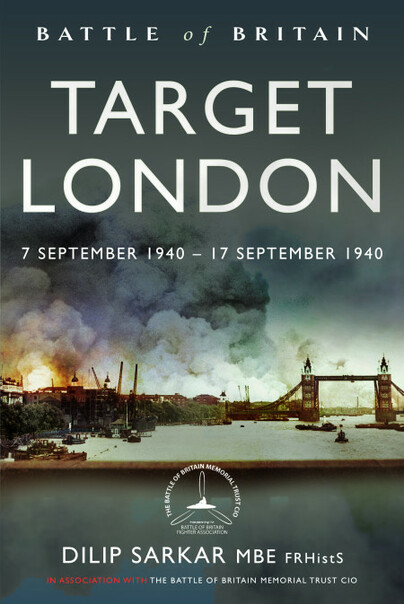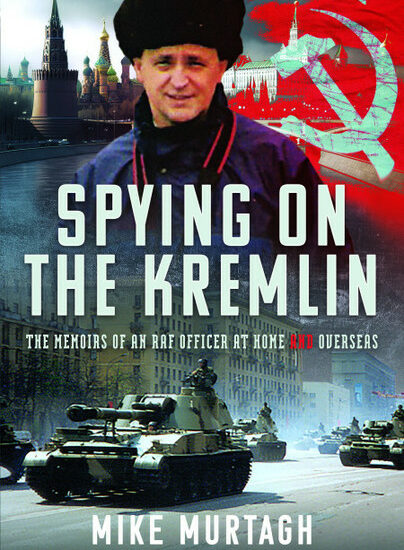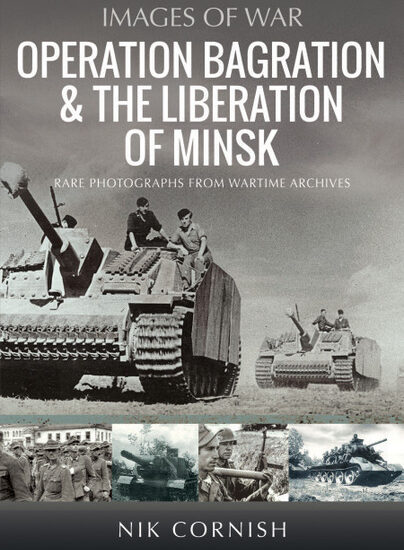Author Guest Post: Dilip Sarkar MBE
Sunday, 15 September 1940: Battle of Britain Day
On Saturday, 7 September 1940, the Luftwaffe began the round-the-clock bombing of London, which was the only target the enemy believed Air Chief Marshal Dowding would commit all of Fighter Command to defend, enabling their destruction en masse. This perception only emphasised, in fact, how the Germans misunderstood how Fighter Command was organised and controlled, even after the events of 15 August 1940, when attacks on a huge front, from Exeter to Newcastle-upon-Tyne, were met by heavy fighter opposition. Dowding did not do any such thing – and nor ever would he, as there was absolutely no need to.
The attacks on London, often serious though they were, were intercepted by RAF fighters from 11 Group, reinforced by 10 and 12 Groups. In the north, 13 Group maintained its strength in anticipation of another attack on north-east England, so clearly the German strategy was flawed from the outset – and by mid-September 1940, time was running out.

Hitler’s preferred strategy to achieve Britain’s surrender through Brinkmanship, bluff and bullying had failed in July 1940, and even afterwards he dallied before eventually ordering an aerial assault on mainland Britain as the prelude to a seaborne invasion. Given the unpredictable British weather, this wasted considerable time. As the Luftwaffe failed to make any significant progress towards destroying the RAF, and because the weather and tides would soon be unfavourable to a seaborne crossing, the time was now critical.
Enabling one last roll of the dice, Hitler postponed his final decision as to whether Operation Seelöwe should actually set sail until 17 September 1940. Luftwaffe Intelligence grossly over-estimated the damage to Fighter Command’s airfields and number of RAF fighters destroyed. This incompetent and inaccurate assessment, therefore, as it had throughout the battle, misinformed strategy. It was consequently decided to deliver London another huge hammer blow by mass formations, intended to overwhelm the defences.
Being the nation’s hub, London’s railway network was vitally important, and the convergence of lines at Battersea was chosen for the morning raid on Sunday, 15 September 1940. The plan entailed an attack on London at 1150 hrs by twenty-one high-flying Me 109 fighter-bombers of II/LG2, followed, at 1210 hrs, by the Battersea bombing by twenty-five Do 17s of I and III/KG76. The bombers were to be heavily escorted, needless to say, by Me 109s, including those of JGs 2, 3, 26, 27, 51, 52, 53 and 77.
For a larger attack in the afternoon, the intention was that London’s East End docklands, Victoria, Royal Albert and King George V, would again be battered, as would the Surrey Commercial Docks, South of the Thames. This was to be carried out in four waves: at 1445 hrs, twenty He 111s were to bomb the Royal Victoria Dock, followed three minutes later by the second wave, eleven Do 17s of II/KG3; at 1450 hrs, twenty-seven He 111s of I and II/KG26 were to attack the West India Dock, and finally, five minutes later, an even larger force, forty-two Do 17s of II and III/KG2, would hit the Surrey Commercial Docks. Again, these bombers too would have a heavy escort of Me 109s, JGs 3, 77 and LG2 all contributing, and on this occasion Me 110s of V(Z)/LG 1 and I/ZG26 would provide close escort.

At his Parisian HQ, Generalfeldmarschall Sperrle’s staff officers were also busy: after Luftflotte 2’s second and major attack on London, at 1530 hrs Luftflotte 3 was to attack further West. The plan entailed eight He 111s of I/KG55 targeting the RN installations at Portland, and eighteen of III/KG55 hitting the fuel storage depot at Portland Harbour. Then, at 1730 hrs, three Me 109 and ten Me 110 fighter-bombers of Erprobungsgruppe 210 were to attack the Supermarine factory at Woolston, Southampton – the experimental unit now operating from Cherbourg-Ost to specifically target the all-important Spitfire factory.
In the belief that Luftwaffe intelligence was correct, the enemy plan, therefore, had a fourfold objective: cause chaos to London’s railway network, destroy essential supplies imported from overseas and stored at dockland warehouses, reduce civilian morale, and – most important of all so far as the future of Operation Seelöwe was concerned – finish Fighter Command as an effective defending force. Moreover, by also attacking Portland and Southampton it was hoped that the defences would be overwhelmed, and that on this occasion Spitfire production at Woolston would be grievously hurt.
The subsequent fighting is reconstructed, in detail, blow-by-blow, minute-by-minute, the narrative proliferated with first-hand accounts offering a 360 perspective, in my Target London: 7 September 1940 – 17 September 1940, this being fifth of the eight-volume official history I have recently completed for The Battle of Britain Memorial Trust CIO and National Memorial to The Few, published by Pen & Sword.
Suffice it to say here that the Germans, briefed to expect only token resistance from a defeated enemy air force, were relentlessly battered by hundreds of RAF fighters – and suffered accordingly. With so many 10 and 11 Group fighters already engaged, the thoughts of German bomber crews can only be imagined when the five-squadron strong Duxford Wing appeared and also entered the fray over London.

Clearly this was no defeated air force – and it was equally apparent that it was unlikely to ever be cowed. Further West, Hauptmann Martin Lutz and his precision bombing unit, Erprobungsgruppe 210, however, reached the Supermarine factory at Woolston unopposed, but nonetheless the all-important factory escaped serious damage.
The following day, the Times newspaper trumpeted that Fighter Command had destroyed a total of 175 German aircraft on 15 September 1940, for the loss of only thirty RAF fighters and ten pilots. A day later, the British victory claim had risen to 185 (178 by fighters, seven by AA guns). In fact, the enemy had lost fifty-six machines in total, less than on 15 and 18 August 1940 (75 and 69 respectively), with three damaged beyond repair and 23 less-so; 81 Luftwaffe aircrew were killed, 63 captured and 31 wounded. The RAF’s casualties were more accurately reported by the Times, as twenty-nine aircraft and twelve pilots had actually been lost – less pilots than on 8 August (14), 11 August (25), 15 August (13), 7 September 1940 (13).
The weather had compromised both German attacks on London, a strong headwind increasing flying times from France to London, thereby providing greater opportunities for interceptions, this wind also contributing to the Me 109s running short of fuel and turning about. Moreover, during the afternoon, cloud covered London, thus preventing accurate bombing. Consequently, the Luftwaffe failed to repeat the hammer-blow of 7 September 1940, or, indeed, deliver the required ‘knockout blow’.
The time was now fast approaching when Hitler would have to make his final decision regarding Operation Seelöwe – which would be heavily influenced by the events of 15 September 1940. Unable to delay any further, owing to moon and tide predictions, Hitler made his decision in the early hours of 17 September 1940.
This simple OKW communication was sent to all commands in the early hours: ‘Wird Bis Auf Weiteres Verschoben’: Operation Seelöwe postponed until further notice.
The effect across the Channel was immediate. The Kriegsmarine command ordered that the assembly of invasion barges must cease forthwith, and the fleet assembled be dispersed.

In recent times, it has been suggested that 15 September 1940 does not deserve its place in history as ‘Battle of Britain Day’, given that RAF combat claims were so inflated. Certainly, 15 August 1940 saw more sorties flown by both sides and Luftflotte 5 defeated in a single day, but there can be no serious doubt that 15 September 1940 was the turning point. Earlier in the battle, the Luftwaffe was able to sustain losses, but by mid-September 1940 things were imminently to become critical if the current rate of attrition continued. The fact was it could not continue to sustain these losses. Moreover, it was clear that Fighter Command remained a force to be reckoned with and could not be neutralized by 17 September 1940, which was the final date, given the changing season, that Hitler had to decide whether or not the invasion would go ahead. The events of 15 September 1940 made it clear that a seaborne invasion was impossible, and therefore informed and underpinned Hitler’s decision to postpone Seelöwe until further notice.
That being so, 15 September 1940 was most definitely the turning point and deserved of its place in history, celebrated annually as ‘Battle of Britain Day’.
Dilip Sarkar MBE FRHistS FRAeS

Order your copy here.
Dilip Sarkar’s YouTube Channel.
Dilip Sarkar’s Website.
Find Dilip Sarkar on Facebook.
The Battle of Britain Memorial Trust CIO.

